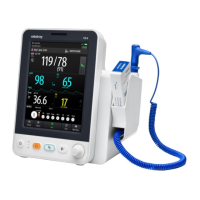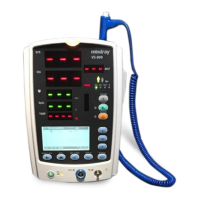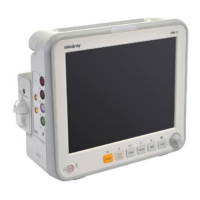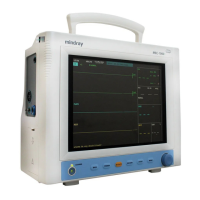9-4
9.5 Measuring NIBP
9.5.1 Preparing the Patient
In order to minimize NIBP measurement errors, whenever possible check that the patient:
Is comfortably seated
Has legs uncrossed
Has feet flat on the floor
Has back and arm supported, and
The middle of the cuff at the level of the right atrium of the heart.
NOTE
It is recommended that the patient relax as much as possible before the NIBP
measurement is performed and that the patient does not talk during
measurement.
It is recommended that the patient sit still for 5 min before the first
measurement is taken.
The operator should not touch the cuff and tubing during the NIBP
measurement.
9.5.2 Preparation to Measure NIBP
1 Power on the monitor.
2. Verify that the patient category is correct. If not, select the hardkey →
[Patient Demographics]→[Patient Category] and set the patient category to
[Adult], [Pediatric] or [Neonatal].
3. Connect the NIBP hose to the monitor.
4. Select the appropriate sized cuff by referring to the limb circumference marked on
the cuff.
The width of the cuff should be 40% (50% for neonates) of the limb circumference, or
2/3 of the upper arm’s length. The inflatable part of the cuff should be long enough
to encircle at least 50% to 80% of the limb.
5. Apply the cuff to an upper arm or thigh of the patient and make sure the Φ marking
on the cuff matches the artery location. Do not wrap the cuff too tightly around the
limb. It may cause discoloration, and ischemia of the extremities. Make sure that the
cuff edge falls within the marked range. If it does not, use a cuff that fits better.
6. Connect the cuff to the air tubing and make sure that the bladder inside the cover is
not folded and twisted. Air must pass unrestricted through the tubing.
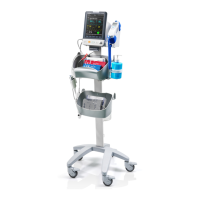
